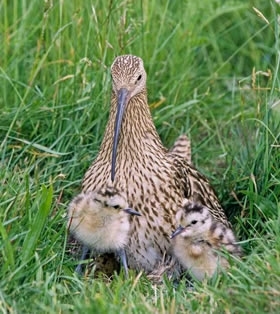 Thanks to the kind donations of GWCT members and supporters, we have already raised over £25,000 for our Curlew Appeal. Every donation we receive helps us raise awareness of the role game management can play in curlew recovery.
Thanks to the kind donations of GWCT members and supporters, we have already raised over £25,000 for our Curlew Appeal. Every donation we receive helps us raise awareness of the role game management can play in curlew recovery.
These initial donations have given our research team the resources to start writing a scientific paper exploring the factors causing curlew decline in the UK, but we require additional funding to increase the impact of this research. If you haven’t yet donated and would like to do so, please click here.
Grouse moors and gamekeepers
Of particular interest to the GWCT is the fact that three times more curlew produce chicks on land where gamekeepers apply predator control measures. This also applies to several other wading birds. Grouse moors tend to be in upland areas, which is where curlew usually breed, but there is a further positive effect linked to the work of gamekeepers.
We need to identify which aspects of their grouse moor management are benefitting curlew, so those interventions could be applied more widely. However, it can be challenging to separate the effects of multiple techniques when they are usually all applied together.
Our research and writing
With your help, we have been able to start writing scientific literature to inform our understanding of the role upland management for gamebirds plays in curlew survival. We hope this will be published in a peer-reviewed journal in order to further establish the importance of these techniques in curlew preservation.
We intend to follow this up with a single easy-to-read, scientifically-robust booklet on curlew. This will be used to brief politicians, journalists and the public on the importance of the species and what is at stake if we fail to act quickly.
Wider concern
We are not the only people who are concerned about the decline in curlew numbers. For example, the RSPB chose curlew as their 2015 ‘Bird of Focus’ for their Big Nature Festival; the writer and presenter Mary Colwell recently walked 500 miles from the west of Ireland to the coast of Lincolnshire, to raise money and awareness for the species; and staff from the RSPB, Scottish Natural Heritage, the Joint Nature Conservation Committee and Natural England published a paper in British Birds arguing that the curlew should be considered the UK’s most pressing bird conservation priority.
However, there is growing awareness of the positive contribution that active management and conservation work on moorland can have. For example, there have been a number of reports from Scotland this year of an increase in curlew numbers on grouse moors.
Help us save the curlew
Please help us get this message out to policy makers by supporting our campaign